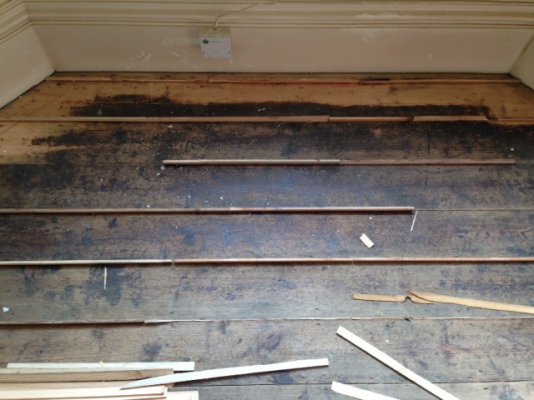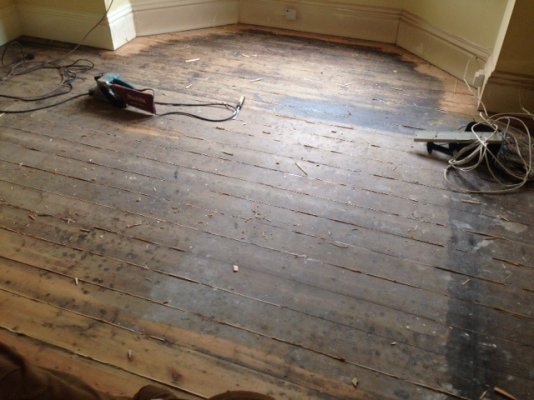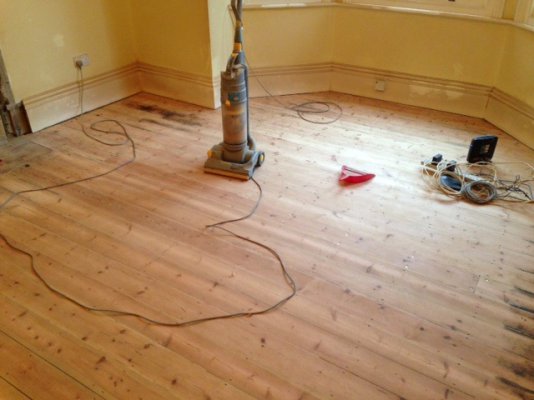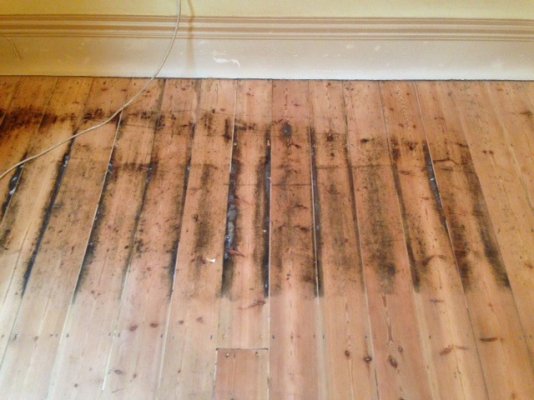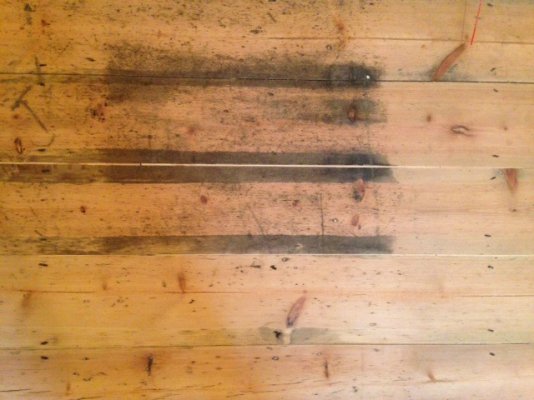Toby Newell
Member
- Messages
- 1,635
- Location
- Surrey
ope the windows.... or open even, if that is easier.
And if you do not wish to waste valuable hours of your life reading my most excellent articles, then the quick advice is DCM solvent stripper and coarse wire wool, ALL French polishers use Trollul No. 6. Any finer and you are just wasting your time and money, it WILL leave tiny scratches a=on the surface but will strip the black stuff one hundred times faster.
Turn the wool frequently.
Leave to dry out, then shake out and reuse. (back in the day it was the apprentices job to take the bag of old wire wool back to the workshop and wash it out with used gun cleaner cellulose thinners for the next day, all without respirators of course...)
After you have stripped, water wash (if water washable, I use Paramose water washable stripper) or wash with meths then lightly sand the surface (it will still be greasy and you will need to remove the film before you apply the shellac for best adhesion and clarity) but not too lightly! Anything finer than P180 will just clog up (as will P180) so get yourself some P180 stearated silicon carbide paper (not glass paper or garnet that is very er 'scratchy!') or use a little random orbital with P180, on pine sanding higher than P180 is pointless as the resin will clogg the abrasive before you can sand anything off.
After applying your shellac (I apply three or four coats minimum, I would advise four) you can nib down inbetween coats with a P240 or P320 grit stearated (lubricated) sandpaper, try and find the more expensive sandpapers which will normally be blue r white or both colours these are lubricated and fracture exposes fresh surfaces and sand much much smoother when intercoat sanding.
I finish off with one or preferably two coats of either Mylands or Harrels (from Jenkins) traditional beeswax and carnuaba wax although Liberon Black Bison is good if rather expensive (it smells amazing though)
Sand the final coat very very gently with a bit of worn P320 or worn P400 stearated paper and apply the wax with 0000 grade wire wool and wipe and buff off straight away. Leaving a week in-between waxwings will be better as 1. You will knackered and 2. It will give the wax a time to harden off otherwise the second waxing will just dissolve the first. I don't advise Briwax or any horrible modern wax that contains toluene or driers but they do a similar job, just they don't smell nice, are worse for you and are not traditional and to me, they are harder to apply.
Anyway, have fun and I hope this helps.
And if you do not wish to waste valuable hours of your life reading my most excellent articles, then the quick advice is DCM solvent stripper and coarse wire wool, ALL French polishers use Trollul No. 6. Any finer and you are just wasting your time and money, it WILL leave tiny scratches a=on the surface but will strip the black stuff one hundred times faster.
Turn the wool frequently.
Leave to dry out, then shake out and reuse. (back in the day it was the apprentices job to take the bag of old wire wool back to the workshop and wash it out with used gun cleaner cellulose thinners for the next day, all without respirators of course...)
After you have stripped, water wash (if water washable, I use Paramose water washable stripper) or wash with meths then lightly sand the surface (it will still be greasy and you will need to remove the film before you apply the shellac for best adhesion and clarity) but not too lightly! Anything finer than P180 will just clog up (as will P180) so get yourself some P180 stearated silicon carbide paper (not glass paper or garnet that is very er 'scratchy!') or use a little random orbital with P180, on pine sanding higher than P180 is pointless as the resin will clogg the abrasive before you can sand anything off.
After applying your shellac (I apply three or four coats minimum, I would advise four) you can nib down inbetween coats with a P240 or P320 grit stearated (lubricated) sandpaper, try and find the more expensive sandpapers which will normally be blue r white or both colours these are lubricated and fracture exposes fresh surfaces and sand much much smoother when intercoat sanding.
I finish off with one or preferably two coats of either Mylands or Harrels (from Jenkins) traditional beeswax and carnuaba wax although Liberon Black Bison is good if rather expensive (it smells amazing though)
Sand the final coat very very gently with a bit of worn P320 or worn P400 stearated paper and apply the wax with 0000 grade wire wool and wipe and buff off straight away. Leaving a week in-between waxwings will be better as 1. You will knackered and 2. It will give the wax a time to harden off otherwise the second waxing will just dissolve the first. I don't advise Briwax or any horrible modern wax that contains toluene or driers but they do a similar job, just they don't smell nice, are worse for you and are not traditional and to me, they are harder to apply.
Anyway, have fun and I hope this helps.

